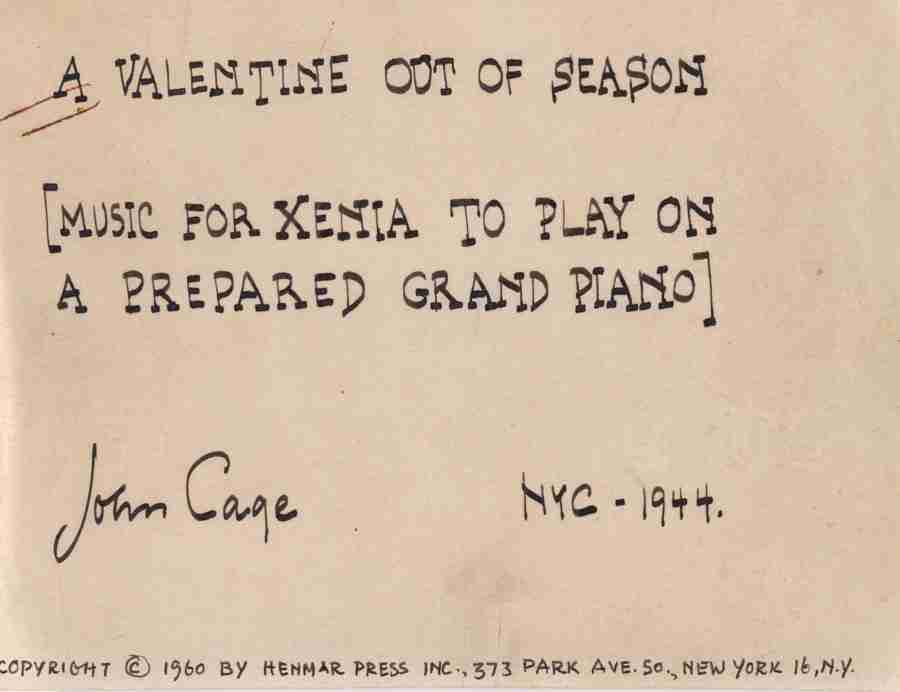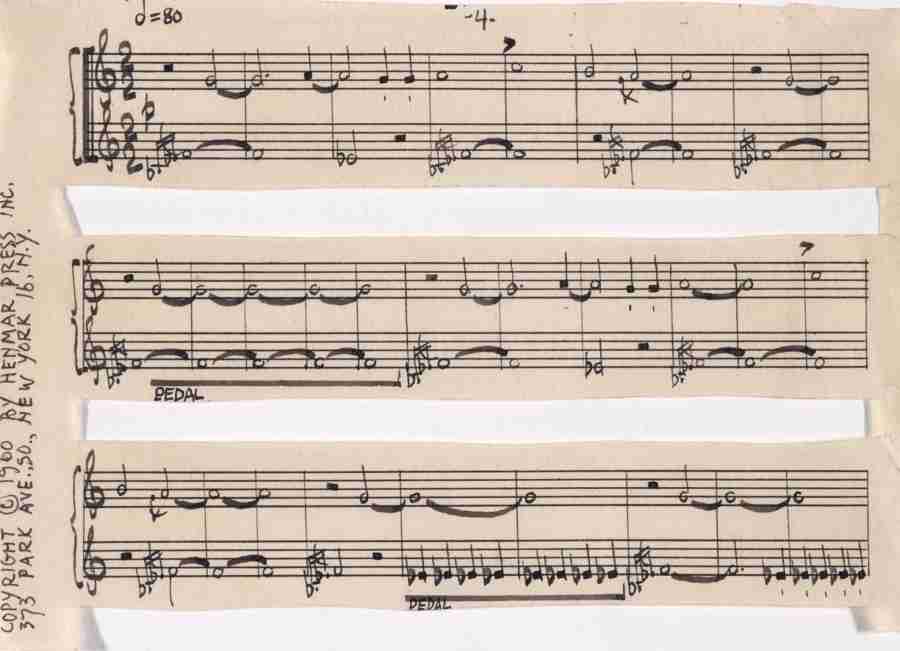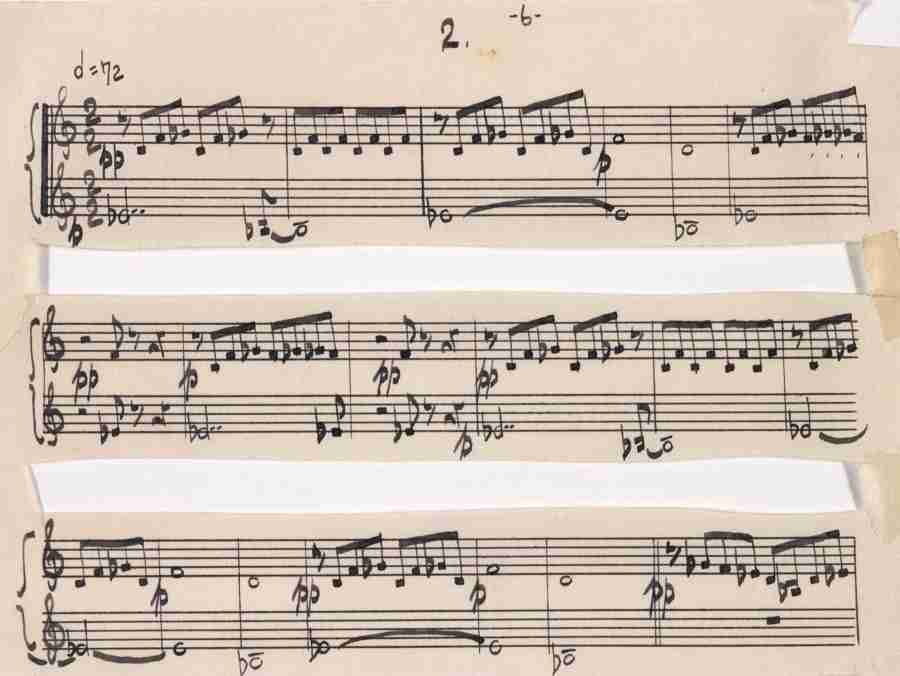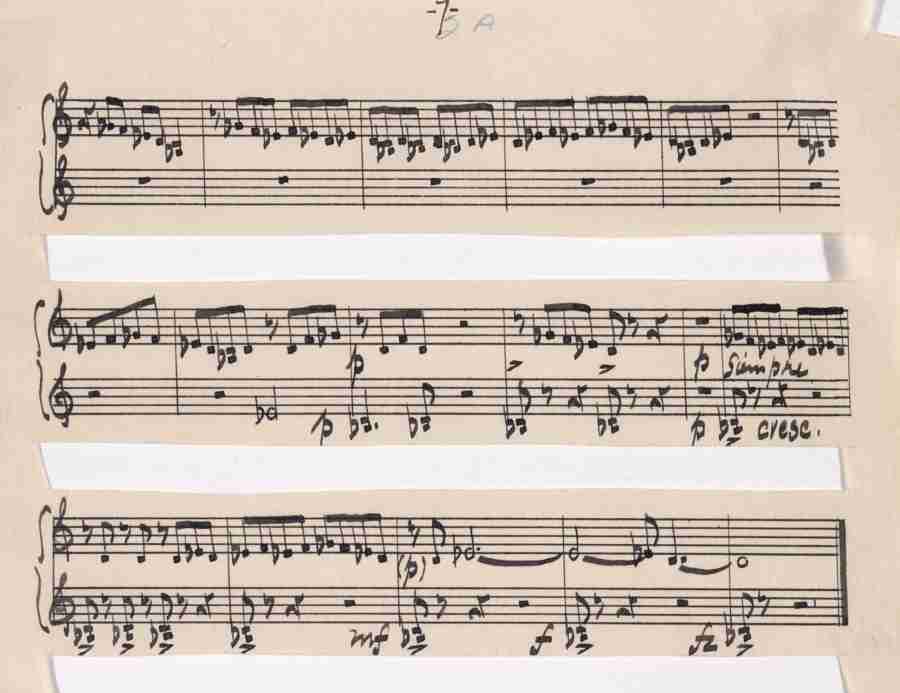
At the beginning of the nineteenth century the sound of the piano could be modified or enriched in the timbre by using pedal-operated mechanisms that gave the effects of "heavenly voices" and "bassoon", or with machinery equipped with plates and bells, or with a soft mallet that hitting the soundboard caused the bass drum effect.
In 1938 John Cage was commissioned for a short ballet. Not being able for financial reasons to employ a group of percussion, he thought of modifying the sound of the piano by inserting between the strings - not all of them - pieces of metal, pieces of rubber, pieces of cloth, pieces of cardboard, pieces of cotton.
It was is the so-called "prepared piano".
The insertion between the strings of various materials modifies the timbre, but, if the thickness of the material is slightly greater than the space between the strings, it also changes the pitch of the sound.
Cage thus obtained a replacement for a little percussion orchestra.
The charm of the prepared piano lies in the timbre that makes one think of the Javanese gamelan.
Cage's music leads to contemplative listening, to the listener's psychological non identification in emotion, evoked but not relived.
The limit consists in monotony, because the pedal-controlled nineteenth-century mechanical devices could be inserted or disengaged as desired while a "prepared" C with a piece of rubber remains identical to itself, and the dynamic range is also largely reduced.
“A Valentine out of the season” was written in 1944 just prior to Cage’s separation from his wife Xenia, hence, perhaps, the title. Overall, it is quite simple, as is the preparation of the piano. The music is a suite of three brief pieces, the first is slow and chromatic, the second a vigorously rhythmic dance, and the last combining the characteristics of the two preceding pieces.







